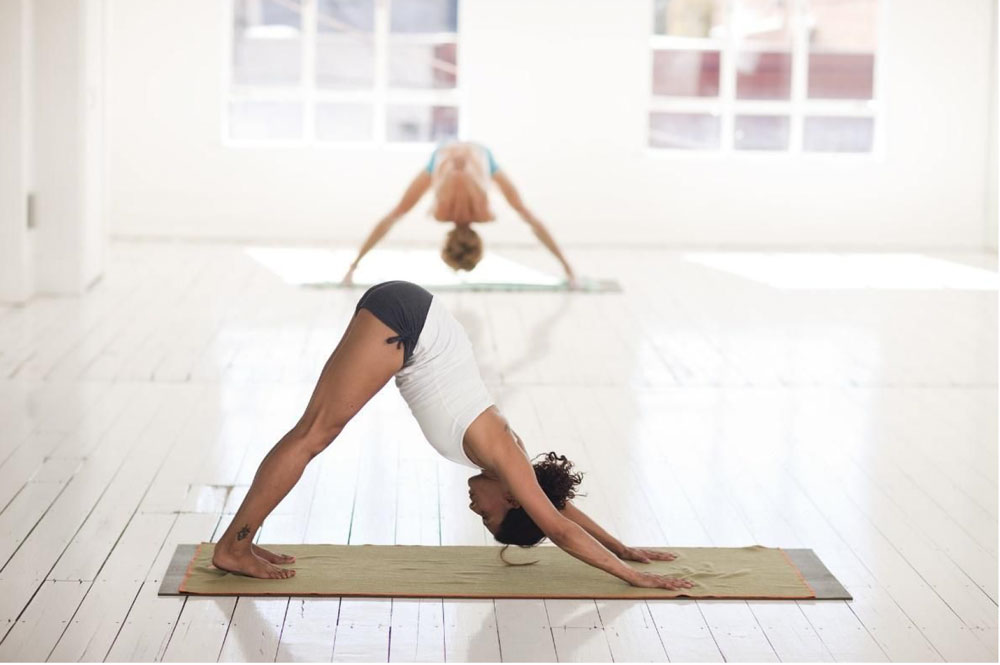Relax & Recharge in the City - Relaxation Techniques

In a city of over 7 million people wrestling for space in 1,100 square kilometres, it’s no surprise that it’s absolutely necessary for Hongkongers to find a way to relax and recharge. In the midst of our sometimes extreme culture of work, there is a need to foster a culture of leisure in order for us to strike a balanced lifestyle.
So, before the stress hormones invade our bodies and take over our lives, we need to manage our stress levels and adopt healthy methods of responding to them.
Let’s take a look at six relaxation techniques we can explore to help reduce our stress levels or keep them in check. The benefits we reap from them are many, such as slower heart rate, lower blood pressure, improved digestion, better overall mood, good sleep quality, slower breathing rate and lower fatigue levels. It’s free, low risk and can be done almost anywhere! Come on, have a go ...
Breathe

Breathe to heal – it’s a simple but powerful technique. Choose a comfortable place to do your breathing exercise. You can be sitting, standing or even lying down. Remember not to force it, as this will trigger more stress.
Take in a slow and deep breath through your nose. Your abdomen should expand and your chest rising a little. Focus on the sound of your breath and detach your mind from disturbing or distracting thoughts. Exhale slowly through your mouth while relaxing your jaw.
Many breathing exercises take only a few minutes. You should start with what you’re comfortable with and work up to 10 minutes or more to reap greater benefits.
Progressive Muscle Relaxation
To fully experience this relaxation method, focus on tensing and then relaxing each muscle group mentally and physically. This method encourages you to become aware of the small differences in muscle tension and relaxation and the subsequent physical sensations you feel after the practice. You may work your way up from your toes to your head or vice versa. Simply tense your muscle for 5 seconds and relaxing for 20 seconds and work through all your muscle groups.
Visualisation
Take a visual journey in search of calm and inner peace by forming mental images of scenarios that is relaxing to you. You may also combine other senses including sound, touch, scent or sight. Imagine a walk by the beach with a loved one, with the sun on your face, listening to the sound of the waves.
It is quite challenging especially for those whose mind is constantly active and hyper. Find your favourite spot, close your eyes, regulate your breathing, have happy and positive thoughts and start your visualisation journey. It takes practice to calm your mind, but with constant practice you’re on your way to a happier and calmer self.
Meditation
Everyone from doctors to psychologist to You Tubers to your Auntie Annie says meditation is good for you. So what is it? Meditation is about training your mind to develop a sense of perspective. Sit comfortably and bring your mind's attention to the present moment. Whatever thoughts that wander in your mind, let it be. Don’t turn it off, just observe them and acknowledge it and bring yourself back to the present. Consistent meditation will eventually help you understand your thoughts and feelings and accept them without judging yourself.
Through meditation, you may also gain many other benefits like improved patience, focus, lower stress levels and higher energy levels.
Chanting
Chanting is an effective technique to quickly help eliminate the onset of a stressful moment. You can repeat a brief, calming chant to yourself which can be a phrase or a few words that bring comfort, such as ‘I will be fine’, ‘Everything is ok’ or ‘It will pass’. If you have spiritual or religious beliefs, you may consider silently repeating a short prayer you’re familiar with. During chaotic times, this practice usually brings with it a much-needed calm.
Yoga and Qigong

They are both ancient Eastern practices teaching awareness of your body and mind with attention to posture and balance. Both these practices also incorporate similar breathing patterns. Regular practice will bring about mental focus and also improves your balance and flexibility. While the movements in Qigong are slower and gentler than yoga movements, they both bring about significant improvements to your physical well-being. Both these practices do not offer instant gratification but if practiced diligently over a long period of time will certainly help you achieve a healthy and ‘quiet’ body and mind. Sign up for a class today!
Explore these relaxation techniques to see which one works best for you. Be kind and patient with yourself and try to practice consistently in order for find out which technique fits your needs. If you are not achieving the results you want, you can consider alternative health care or consulting with your doctor for other relaxation techniques. Take the time to give yourself small pauses in life, enjoy the sound of silence, chill the whole day if that’s what you want to do. Really – sometimes it’s ok to just sit and do nothing.



